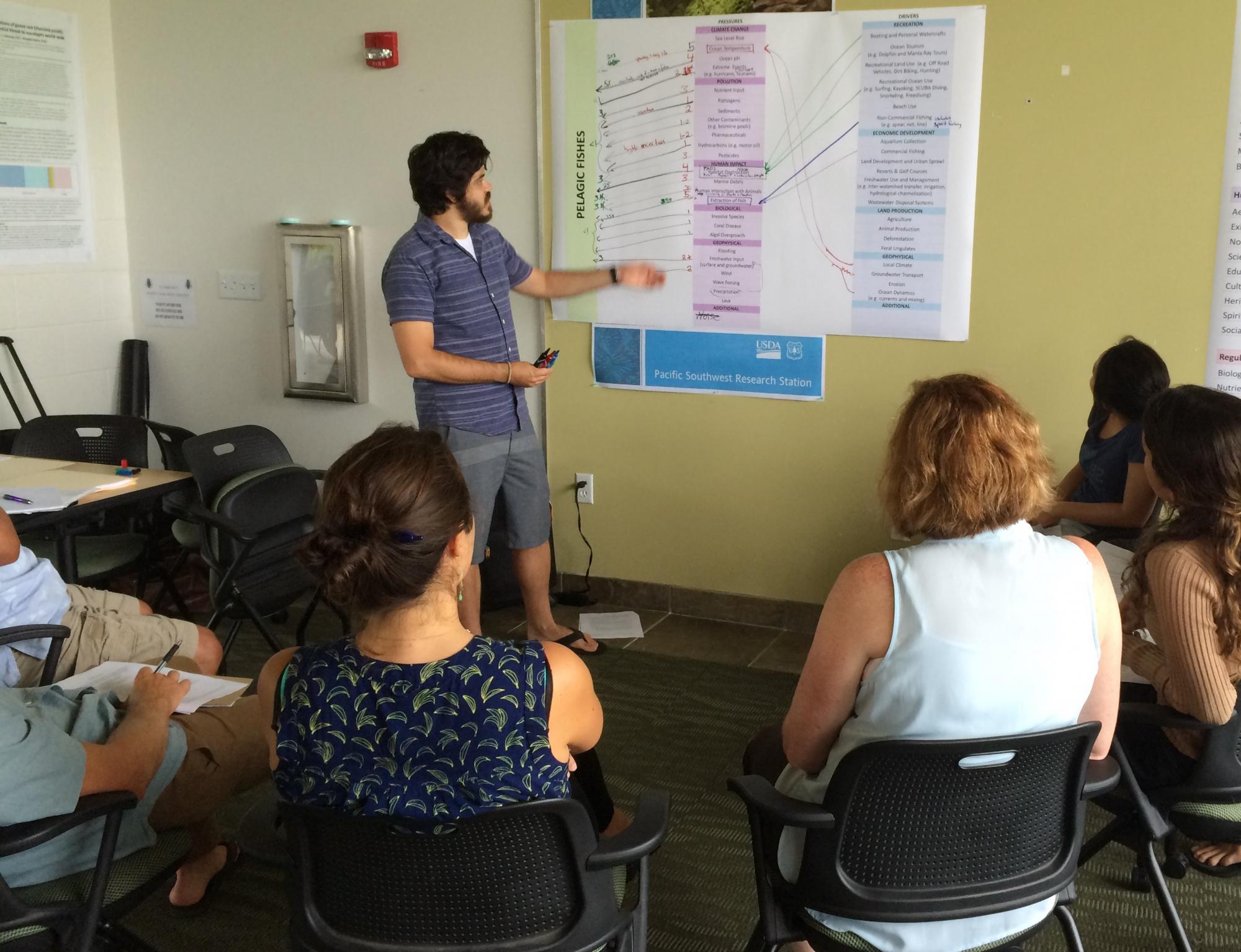Human Well-being and Marine Management Decisions
NOAA's West Hawai‘i Integrated Ecosystem Assessment (IEA) program considers it crucial to understand the connections between humans and ecosystems, and the significant role that the environment plays in human well-being. Understanding and incorporating human well-being into management decisions is essential because ecosystem change and resource management decisions impact human well-being. At the same time, changes in human well-being can affect the ways that people choose to interact with the ecosystem.

The definition of human well-being changes according to regional nuances and social values. Overall, it refers to the ability of people to live a life that they value. This can be in reference to physical, spiritual, social, and/or emotional aspects. The concept of human well-being usually encompasses a combination of factors including cultural and heritage values and access to resources, among others.
The need to incorporate human well-being in marine resource management has been increasingly recognized in recent years. This need is validated by the lack of indicators that represent the social components of a place (Breslow et al. 2017). Yet there are vast amounts of biophysical and ecological indicators used to track and monitor the trends and status of an ecosystem. Indicators are specific, well-defined, and measurable variables that have been proven to reflect the status of some component of the ecosystem. Monitoring indicators provide a practical means to judge changes in ecosystem attributes related to the achievement of management objectives.
Also missing from marine resource management is the understanding and inclusion of numerous dynamic connections between human well-being and ecosystem services. Understanding these connections can elucidate how people attribute values to different ecosystem services (Dillard et al. 2013).
Engaging Stakeholders
The process of carrying out an Integrated Ecosystem Assessment includes engaging with all relevant stakeholders from a region, such as resource managers, scientists, and community members. The West Hawai‘i IEA program recently engaged stakeholders in West Hawai‘i to understand key social and ecological relationships in this region — human dimensions — and develop a conceptual model (Ingram et al. 2018). Understanding these relationships will help to guide management by gaining perspective on how societal actions are influencing ecosystem services and benefits, and associated values, that are derived from the ecosystem. Along with identifying numerous social and ecological connections, this work investigated how heavily ecosystem change would impact each ecosystem service.
Through this participatory process, stakeholders identified key drivers and pressures that are directly affecting the ecosystem state. Drivers are distal events that create pressures, which directly change the ecosystem's state leading to potentially negative impacts. Importantly, of all the identified pressures, almost half are amenable to local management action in West Hawai‘i. These are pressures such as nutrient input, habitat destruction, and overfishing.
Conceptual Model of West Hawai‘i
This process also revealed that cultural ecosystem services are perceived to be strongly impacted by changes in ecosystem state. Cultural ecosystem services are intangible, non-material benefits and values that contribute to human well-being. These include the way that people connect and interact with their natural environment, an attachment to a place, aesthetic values, recreational opportunities, and subsistence activities. It is largely well-known that people who connect and interact with nature are overall happier and healthier (Russell et al. 2013).

Cultural ecosystem services are rarely captured in management strategies despite their importance to human well-being and possible vulnerability. This absence is a potentially dire issue since cultural services are critical to human well-being in West Hawai‘i. The West Hawai‘i IEA program plans to work with community members and relevant management bodies to change this.
Moving Forward
The West Hawai‘i IEA aspires to build a better understanding of the significant cultural benefits and values that are linked to the natural environment but are often left unaddressed in resource management. One strategy is to decipher how the West Hawai‘i community interacts with intangible, non-material ecosystem services (through spiritual, social, and emotional avenues) and learn how people value these services differently. With this understanding, the IEA can begin to monitor these cultural services alongside other ecosystem services, which translates to monitoring what matters most to society.
The West Hawai‘i IEA program will continue to work towards bringing human well-being into marine management in a meaningful way that serves the communities of West Hawai‘i by integrating local values, knowledge, and perspectives. This will require developing a process that is place-based, informed by communities, and addresses social needs.
